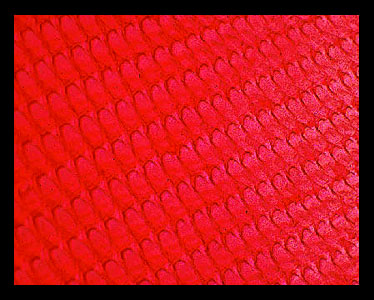
Nutrition
This snail contains a stronger trophic apparatus (can consume easily) than other freshwater snails, allowing it to ingest macrophyte tissue (water plants) and thriving on lettuce, as well as grazing rather nonspecifically the periphyton (freshwater organisms attached to plant and other objects projecting out of the bottom). One of the main features associated with nutrient acquisition in snails is the radula.
 This
slide shows a stained section of a radula from a snail.
This
slide shows a stained section of a radula from a snail.
The radula is found within the buccal cavity it is supported by muscle and cartilage. This "toothed tongue" is made of chitin and is composed of many tiny tooth-like structures. The actual structure of the radula depends on the diet of the organism. Shape correlates with function. the radula of a carnivorous gastropod is narrow and possess a few teeth with many long, pointed cusps. The radula of herbivores on the other hand is broad and has many small teeth.